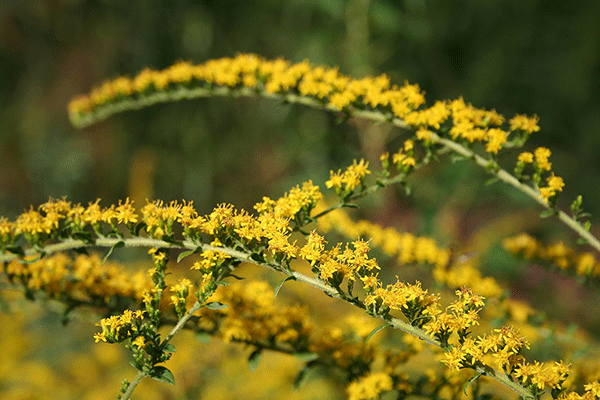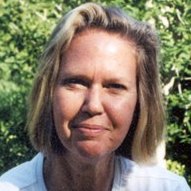It’s a hard myth to dispel and, if you suffer from fall allergies, an important one. But goldenrod is not to blame for your runny nose, itchy eyes and poor sleep.
Why is goldenrod so commonly blamed?
Unfortunately for Nebraska’s state flower, it happens to bloom at the same time and in the same places as ragweed—in ditches, meadows, pastures and roadsides. But whereas goldenrod has large, horizontal, bright yellow blossoms, the flowers of ragweed are small, greenish and fade in with other foliage. While it’s difficult to distinguish ragweed, it’s almost impossible not to see goldenrod this time of year; and chances are they’re growing side-by-side.
Some references go so far as to say that “no one is, or can be, allergic to goldenrod pollen” (Edible Wild Food website). Others cite that 90 percent of pollen-induced allergies in the U.S. are induced by ragweed pollen and that almost all pollens that are allergens are wind-pollinated. Ragweed is so lightweight it can travel up to 400 miles in the wind, while goldenrod pollen is “too heavy and sticky to be blown far from the flowers, and is pollinated mainly by insects” (Wikipedia).
Other Issues
Goldenrod has a few other “marketing issues” besides the false claim of it being an allergen. Some species—but not all, as noted below—can get leggy and need staking in overly fertile soils, and some can spread aggressively.
Great Attributes
Still, there are good reasons goldenrod is our state flower. It flourishes in areas where other plants would struggle so these hardy, drought-tolerant, long-lived plants are a fitting symbol of the early pioneers.
Their bright blossoms are a welcome sight in early fall, sprinkling the landscape with brilliant yellows before trees begin to take on their own fall color, and they bloom from late summer well into fall. They are long-lasting in bouquets, and even longer-lasting in dried arrangements.
It’s an excellent pollinator plant for butterflies, bees, wasps, beneficial spiders and many other insects which in turn are important foods for songbirds. The pollinators you see on goldenrod are actually verification that its pollen is so heavy it has to be carried by insects and isn’t a wind-borne allergen.
For Native American tribes, goldenrod bloom were a sign that corn was ready for harvesting. They also used it to make a tea to treat heart conditions, a painkiller for bee stings and an ointment for muscle pains and toothaches.
Growing Goldenrod
Goldenrods prefer full sun and well-drained soil. The state flower is giant goldenrod, Solidago gigantea, one of about 16 species native to Nebraska. Though it can grow 5-7 feet high, there are many garden-worthy cultivars that are shorter and less aggressive:
- ‘Golden Baby’ and ‘Golden Fleece’ goldenrod grow to about 18 inches high.
- Showy Goldenrod (Solidago speciosa) is a prairie native that blooms somewhat later, has attractive red stems and is one of the showiest. Grows 2-3 feet high.
- Riddell’s goldenrod has flat-topped flower clusters 2-3 feet high.
- ‘Crown of Rays’ has large, golden, crown-like flowers on stiff stems 2-3 feet high.
- ‘Wichita Mountains’ has rods of bright yellow flowers on 2-3 foot stems.
- Zigzag goldenrod, Solidago flexicaulis, can take part shade. It has finely-serrated oval leaves and is named for the way the flowers zig and zag their way up the 2-4 foot stems.
- ‘Fireworks’ has narrow, lacy, long-lasting blooms and stands 3-4 feet high.
Nebraska Statewide Arboretum is a nonprofit that works toward sustainable home and community landscapes through initiatives in education, public gardens and the environment. Plant and landscape resources at http://plantnebraska.org.

